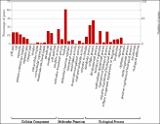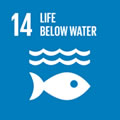Por favor, use este identificador para citar o enlazar a este item:
http://hdl.handle.net/10261/305960COMPARTIR / EXPORTAR:
 SHARE SHARE
 CORE
BASE CORE
BASE
|
|
| Visualizar otros formatos: MARC | Dublin Core | RDF | ORE | MODS | METS | DIDL | DATACITE | |

| Título: | Sardines at a junction: Seascape genomics reveals ecological and oceanographic drivers of variation in the NW Mediterranean Sea |
Autor: | Antoniou, Aglaia; Manousaki, Tereza; Ramírez Benítez, Francisco CSIC ORCID CVN ; Cariani, Alessia; Cannas, Rita; Kasapidis, Panagiotis; Magoulas, Antonios; Albo Puigserver, Marta CSIC ORCID ; Lloret Lloret, Elena CSIC ORCID ; Bellido, José M.; Pennino, Maria Grazia CSIC ORCID ; Follesa, Maria Cristina; Esteban-Acón, Antonio; Saraux, Claire; Sbrana, Mario; Spedicato, Maria Teresa; Coll, Marta CSIC ORCID ; Tsigenopoulos, Costas S. | Palabras clave: | Climate change ddRAD Outliers Population genomics SNPs |
Fecha de publicación: | abr-2023 | Editor: | John Wiley & Sons | Citación: | Molecular Ecology 32(7): 1608-1628 (2023) | Resumen: | By evaluating genetic variation across the entire genome, one can address existing questions in a novel way while raising new ones. The latter includes how different local environments influence adaptive and neutral genomic variation within and among populations, providing insights into local adaptation of natural populations and their responses to global change. Here, under a seascape genomic approach, ddRAD data of 4609 single nucleotide polymorphisms (SNPs) from 398 sardines (Sardina pilchardus) collected in 11 Mediterranean and one Atlantic site were generated. These were used along with oceanographic and ecological information to detect signals of adaptive divergence with gene flow across environmental gradients. The studied sardines constitute two clusters (FST = 0.07), a pattern attributed to outlier loci, highlighting putative local adaptation. The trend in the number of days with sea surface temperature above 19°C, a critical threshold for successful sardine spawning, was crucial at all levels of population structuring with implications on the species' key biological processes. Outliers link candidate SNPs to the region's environmental heterogeneity. Our findings provide evidence for a dynamic equilibrium in which population structure is maintained by physical and ecological factors under the opposing influences of migration and selection. This dynamic in a natural system warrants continuous monitoring under a seascape genomic approach that might benefit from a temporal and more detailed spatial dimension. Our results may contribute to complementary studies aimed at providing deeper insights into the mechanistic processes underlying population structuring. Those are key to understanding and predicting future changes and responses of this highly exploited species in the face of climate change | Descripción: | 21 pages, 8 figures, 1 table, supporting information https://doi.org/10.1111/mec.16840.-- Data Availability Statement: Raw reads have been deposited to European Nucleotide Archive (ENA) under the accession id PRJEB45992. A VCF file with all filtered and unlinked SNPs used in the analyses of this study is provided as an additional file. | Versión del editor: | https://doi.org/10.1111/mec.16840 | URI: | http://hdl.handle.net/10261/305960 | DOI: | 10.1111/mec.16840 | ISSN: | 0962-1083 | E-ISSN: | 1365-294X |
| Aparece en las colecciones: | (ICM) Artículos (IEO) Artículos |
Ficheros en este ítem:
| Fichero | Descripción | Tamaño | Formato | |
|---|---|---|---|---|
| Antoniou_et_al_2023.pdf | 9,99 MB | Adobe PDF |  Visualizar/Abrir | |
| Antoniou_et_al_2023_suppl_appe_1.docx | 108,18 kB | Microsoft Word XML | Visualizar/Abrir | |
| Antoniou_et_al_2023_suppl_appe_2.zip | 12,26 MB | Zip | Visualizar/Abrir | |
| Antoniou_et_al_2023_suppl_fig_1.pdf | 397,4 kB | Adobe PDF |  Visualizar/Abrir | |
| Antoniou_et_al_2023_suppl_fig_2.pdf | 247,48 kB | Adobe PDF |  Visualizar/Abrir | |
| Antoniou_et_al_2023_suppl_tabl_5.xlsx | 77,48 kB | Microsoft Excel XML | Visualizar/Abrir |
CORE Recommender
SCOPUSTM
Citations
6
checked on 20-abr-2024
WEB OF SCIENCETM
Citations
5
checked on 28-feb-2024
Page view(s)
74
checked on 27-abr-2024
Download(s)
121
checked on 27-abr-2024
Google ScholarTM
Check
Altmetric
Altmetric
Este item está licenciado bajo una Licencia Creative Commons



